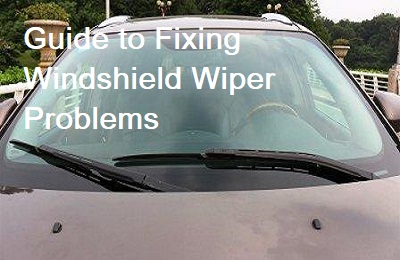
Unfortunately, drivers often discover windshield wiper problems when they need them the most. In this brief article we’ll attempt to talk you into fixing windshield wiper problems before they become a safety concern.
In addition, we’ll review some of the most aggravating issues drivers complain about. Things like, wiper blade chatter and squeaking noises can drive you absolutely insane on a long rainy road trip.
Before you trade the automobile in or pull your hair out, take 5 minutes to read this comprehensive article. Solving many of these concerns falls into the do-it-yourself category of auto repair. Let’s see if we can help you solve these common wiper system complaints without a trip to see your mechanic.
Automotive Windshield Wipers
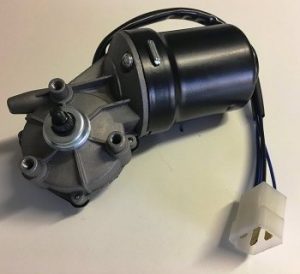
Car manufacturers try to complicate these basic systems by adding variable speeds and rain sensing equipment. However, the primary elements or individual parts of the system remained very similar to the first motorized wiper blades deployed in the 1920s.
Let’s go over the basics of how the system operates. If you understand how it works you’ll find greater success in fixing windshield wiper problems. Let’s start with the wiper motor.
They mount this electric motor on or near the firewall, thanks to its close proximity to the windshield. Manufacturers designed a set of linkages that connect the motor to the wiper arms. We call this the windshield wiper transmission.
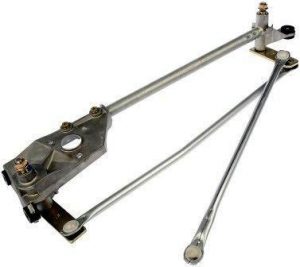
Simply put, it converts the rotational motion of the electric motor to a back and forth sweeping action at the wiper arms and rubber blades. You’ll notice at some point the wiper sweeping action changes direction.
Car makers design this into the length of the linkage contained in the wiper transmission. Why is this important? If you have blades that run off of the windshield surface, this points to a problem with the linkage in the windshield wiper transmission.
Another function built into the transmission is the timing of the wipers so that they don’t smack into each other. As you can see we’ve already addressed to common windshield wiper problems and were just getting started.
Worn Out and Damaged Wiper Blades
We can’t talk about fixing windshield wiper problems without addressing the weakest link in the entire system. By far, the delicate rubber blades that ride against the glass surface become the most problematic part of the equation. Car owners wonder how often they should replace these blades. The answer this question really depends on localized environmental conditions.
With that said, replacing this inexpensive maintenance item once a year remains a good habit to get into. With the cost of replacement blades in the $15-$20 range, it’s money well spent. It beats getting stuck in a torrential downpour and finding out that the blade surface isn’t clearing the windshield properly, because of wear or damage.
Often drivers use the blade to clean things off of the windshield they shouldn’t. A few examples include frost, hardened ice and bird droppings. When the soft rubber blade passes over these hard and sometimes sharp obstacles, it can damage the surface that rides against the windshield. The common complaint that results is streaking or spots left unclear as the wiper sweeps past. For some reason, It always seems the worst of it falls in the field of vision when this happens. Not only is it annoying, but we also consider it a safety issue.
Fixing Windshield Wiper Noise
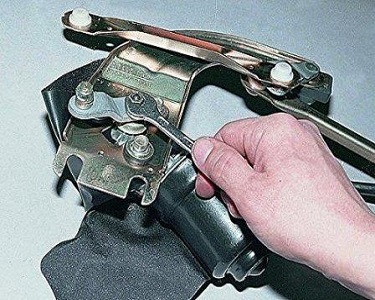
One of the most annoying windshield wiper problems you can run into is a noise that’s generated by the blade scraping across the windshield. To me, it’s like nails on a chalkboard. I can’t even imagine driving for hours with this type of problem. Mechanics call this condition, windshield wiper blade chatter.
Worn out or damaged wiper blades, as mentioned above, can cause these noises. Especially, old wiper blades that have hardened over time and lost their original flexibility. When trying to solve a windshield chatter problem, we recommend replacing the blades as a starting point. However, this doesn’t always solve the issue.
In some cases the windshield winds up with a coating of foreign material on it. Instead of a smooth glass surface to ride against the rubber blades catch and release on this coating. Pollen and tree sap are few of the things that might need cleaning off the windshield. With that said, the most common is probably residue left over from hot wax application. This is the kind of foul stuff that sprays out of an automatic car wash.
They intended this substance to land on the painted surfaces of the automobile, not the glass. Unfortunately, when you pay that extra two dollars, the entire car gets coated with this sticky residue. Note that this can be challenging to remove. Another thing that can cause windshield wiper blade chatter is the application of windshield protector that claims to shed water. These work fantastic when first applied. However, as they age and bake in the sun they turn into something less desirable.
Fixing Windshield Wiper Problems
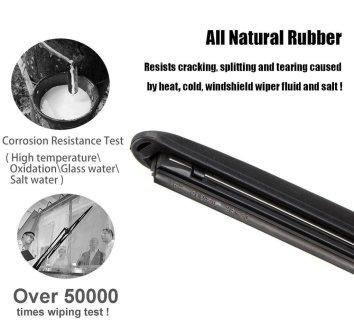
The windshield wiper systems installed on automobiles remains a reliable system. When drivers run into problems the root cause can often be traced back to a self-inflicted wound. All too often we ask our wiper blades to do things that they weren’t built for.
If you walk out to your car and there’s 8 inches of wet snow on the windshield, the wiper blades weren’t made to remove this for you. Nevertheless, you turn them on and they try their best to accomplish the mission. Unfortunately, the wiper linkage inside the transmission bends or the wiper arms strip. This is why drivers often find the wipers out of time or running off the windshield glass after such an event.
Another thing to consider becomes the environmental conditions that the rubber gets exposed to. If the Arizona sun starts baking your delicate, black rubber wiper blades, day after day, they probably won’t make it to the one-year point for replacement. If you attempt to get longer service out of them they can disintegrate. Then the frame that holds the blade scratches the windshield. As you can see preventive maintenance is worth a pound of cure in this situation.

